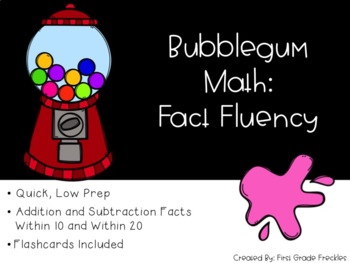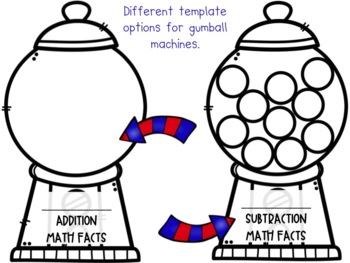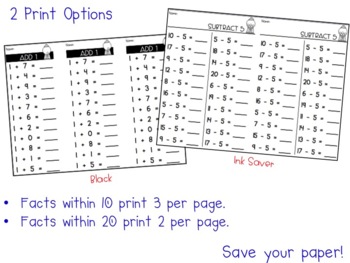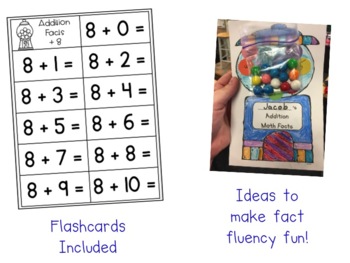Bubblegum Math: Fact Fluency
First Grade Freckles
2.4k Followers
Grade Levels
K - 2nd
Subjects
Resource Type
Standards
CCSSK.OA.A.5
CCSS1.OA.C.6
CCSS2.OA.B.2
Formats Included
- PDF
Pages
170 pages
First Grade Freckles
2.4k Followers
What educators are saying
My students loved using this at the start of every math period. They begged me to let them complete more than 1 a day. Love this resource.
We use this to help master certain facts, and my kids love being able to track their progress by coloring in their bubble gum!
Description
My students were bored working towards the goal of math fluency. With this simple and easy to manage incentive students are now excited and engaged in math fact fluency!
Each student will get a paper gum ball machine. Every time they can pass a math facts test (we have a 60 second time limit in our class) they earn a gum ball for their machine. You can also give students an actual gumball too, but that is up to you!
What's Included?
- Gum Ball Machine Templates
- Addition Checks 1-10
- Addition Checks 1-20
- Subtraction Checks 1-10
- Subtraction Checks 1-20
- Addition Flashcards
- Subtraction Flashcards
Ideas for Use...
- Glue gum ball machines templates in math journals.
- Use a hole punch to punch out gum balls rather than printing and cutting them out.
- Use colorful, circle stickers as your gumballs.
- Get a gum ball machine and allow students to earn gum balls for accurately completing math facts!
Total Pages
170 pages
Answer Key
N/A
Teaching Duration
N/A
Report this resource to TPT
Reported resources will be reviewed by our team. Report this resource to let us know if this resource violates TPT’s content guidelines.
Standards
to see state-specific standards (only available in the US).
CCSSK.OA.A.5
Fluently add and subtract within 5.
CCSS1.OA.C.6
Add and subtract within 20, demonstrating fluency for addition and subtraction within 10. Use strategies such as counting on; making ten (e.g., 8 + 6 = 8 + 2 + 4 = 10 + 4 = 14); decomposing a number leading to a ten (e.g., 13 - 4 = 13 - 3 - 1 = 10 - 1 = 9); using the relationship between addition and subtraction (e.g., knowing that 8 + 4 = 12, one knows 12 - 8 = 4); and creating equivalent but easier or known sums (e.g., adding 6 + 7 by creating the known equivalent 6 + 6 + 1 = 12 + 1 = 13).
CCSS2.OA.B.2
Fluently add and subtract within 20 using mental strategies. By end of Grade 2, know from memory all sums of two one-digit numbers.





